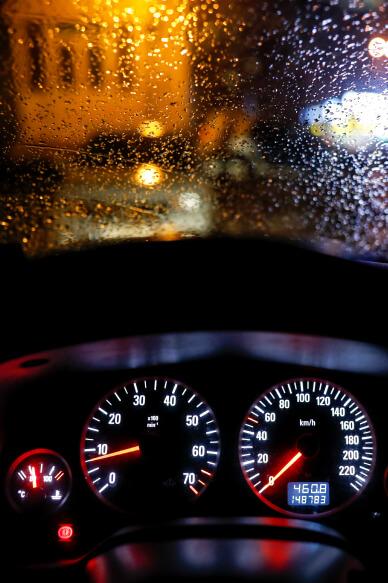Vehicle Warning Lights
Nobody wants to be stranded in a vehicle due to a drained battery or empty fuel tank, especially if you're driving a rented car abroad.
To help you out, we've put together a list of common warning lights that might help you avoid unfortunate or even dangerous situations. Clip and keep for reference.
Red Warning Lights
◾ Coolant Level
Indicates an excessively hot engine. This might be due to a low coolant level. Be cautious when opening the radiator cap while the engine is hot to avoid severe burns.
◾ Low Oil Pressure
Signals that the engine lacks oil, which can lead to severe engine problems. Check the oil level using the dipstick, and refill if necessary.
◾ Brake System
This light can signal the need to disengage the parking brake. In some cases, it indicates worn-out brakes or a low brake fluid level. Another reason could be either brake wear or low brake fluid. Additionally, a fault in the ABS system might also illuminate the battery light.
◾ Battery
Points to an electrical system malfunction.
◾ Overheated Braking System
Stop carefully by the side of the road and proceed only once the system has cooled.
◾ Gearbox Temperature
This light suggests a system fault or an excessively high temperature. Allow the system to cool if this occurs.
◾ Open Door
Ensure all car doors are securely closed before continuing your journey.
Yellow Warning Lights
◾ Low Fuel Gauge
Refuel your vehicle soon as the fuel is running low.
◾ Engine Emission
A potential fault in the engine or emission system. Although not an immediate concern, check the source of the problem accordingly.
◾ Rear Fog Light Active
Remember to switch it off when no longer needed.
◾ Tire Pressure
Indicates irregular tire pressure or a fault in the pressure monitoring system. After inflating tires, press and hold the SET button to confirm the light turns off.
◾ Brake Pads
Warns of defects in brake pads, and in specific situations, suggests a need to replace brake discs or brake fluid.
◾ Rear Window Defogger
Ensure the defogger is turned off once the fog has cleared.
◾ External Light
A potential fault in the external light. Occasionally, this means a burned-out bulb.
◾ Internal Engine Heater
Found in diesel vehicles. Such a fault could impact vehicle propulsion.
◾ Engine Oil Level
Suggests refilling engine oil to reach the desired level.
◾ Low Windshield Washer Fluid
Similar to the above, refill water to the desired level.
◾ Airbag
The airbag system isn't functioning correctly.
◾ Seatbelt System
A passenger isn't buckled in, or there's a fault in the seatbelt system.
◾ Stability Control System ESP
A flashing light indicates the system is active. A steady light over time can mean a malfunction in the ESP system.
◾ Battery
Indicates a charging system or alternator issue. This means the battery isn't charging, potentially causing the car to stall soon.
Green or Blue Warning Lights
◾ Low Engine Temperatures
Typically illuminates during the vehicle's initial start-up or on extremely cold days.
◾ Fog Lights
The front fog light is on, helping improve visibility in less-than-optimal conditions.
◾ Brake Pedal
This light will illuminate if there's a need to press the brake to either start the vehicle or switch to the Drive mode.




